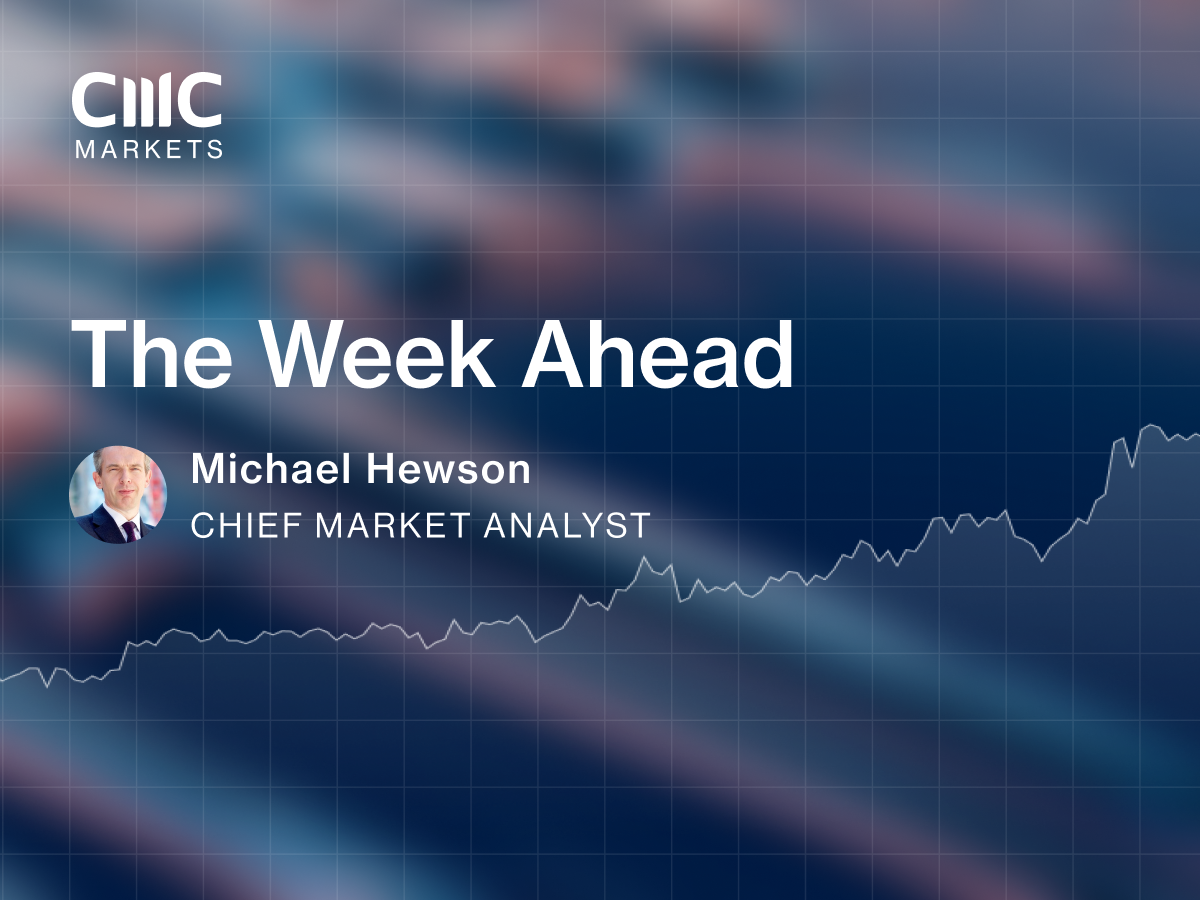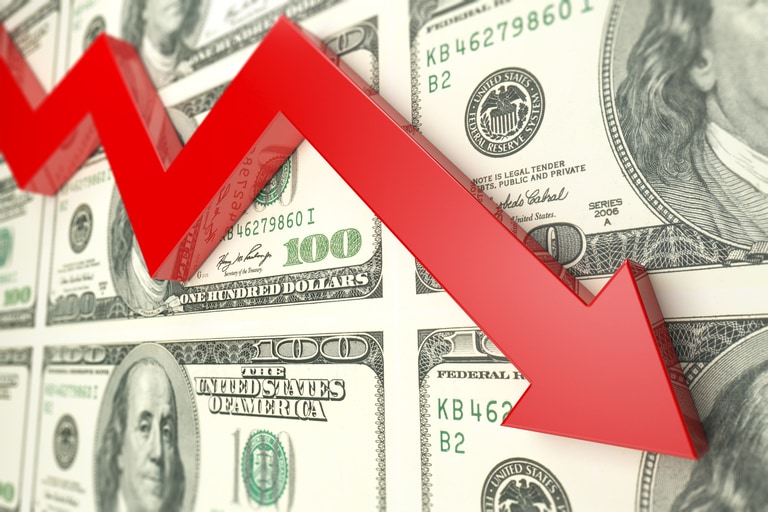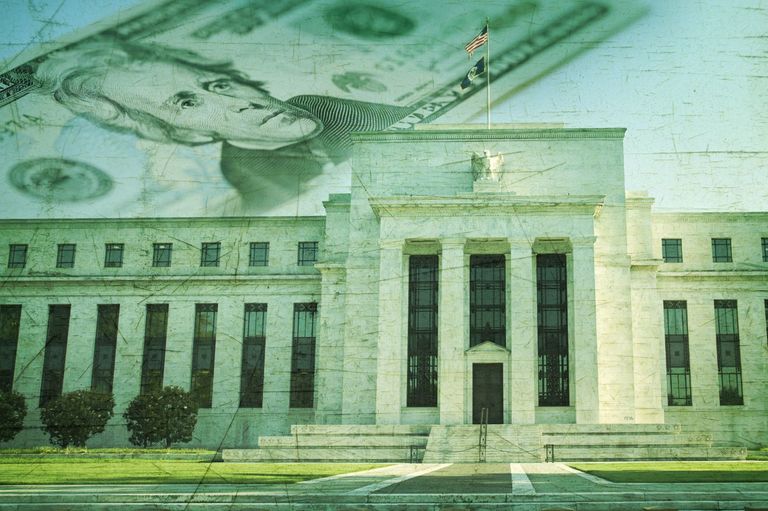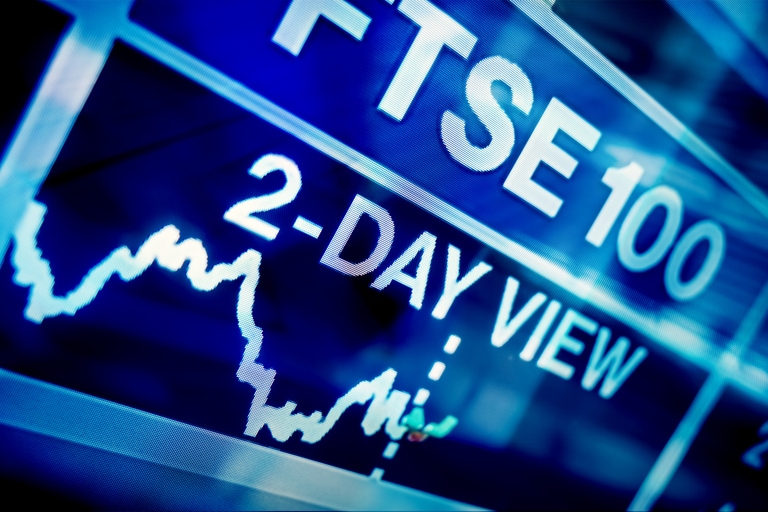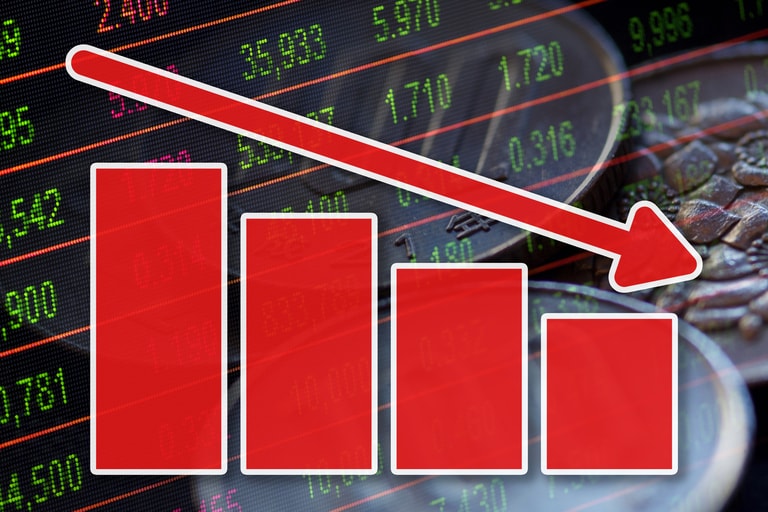On Wednesday the US Federal Reserve faces a tricky interest rate decision as it seeks to tame stubbornly high inflation while calming the financial system after the collapse of Silicon Valley Bank and Signature Bank. In the UK, fresh inflation data on Wednesday will help shape the Bank of England’s interest rate decision on Thursday. Plus, as the stream of earnings reports slows to a trickle, Nike, JD Wetherspoon and DIY retailer Kingfisher are among those due to report results.
Our top three economic events to look out for this week are:
1. Wednesday – Federal Reserve interest rate decision
Before the collapse of Silicon Valley Bank and the subsequent rescue package, the Federal Reserve was facing a fairly simple choice between raising interest rates by 25 or 50 basis points (bp). Now, though, the selloff of US banking stocks and the volatility of the last few days appears to have trumped concerns about inflation and the strong payrolls report for February. Fears over the US banking sector and the wider economy have even led some to suggest that the Fed might hold or even cut rates on Wednesday. Cutting rates would be an overreaction. It would send the message that there is a wider problem, which could spook markets.
Powell’s recent comments to US lawmakers indicate that the Fed remains concerned about rising prices. Much of the focus will be on the Fed’s interest rate projections, known as the “dot plot”, and the question of how many rate hikes are likely this year. After the Fed last month raised its benchmark interest rate by 25bp to a range of 4.5% to 4.75%, there had been some speculation prior to SVB’s collapse that policymakers might ramp the next rate hike back up to 50bp. Given the strength of recent economic data, the Fed should probably have raised rates by 50bp in February, rather than easing to 25bp, but that’s ancient history.
A move back to 50bp this month would appear reactive. A better option now would be to increase rates by 25bp, signal further rate hikes of 25bp in the coming months, and update GDP and inflation forecasts. Bond markets had already adjusted to suggestions that rates might stay higher for longer, and despite recent volatility financial conditions are tighter now than they were at the start of February. For Fed chair Jay Powell, managing market expectations and communicating how recent events shaped the Fed’s interest rate decision will be crucial.
What is the Fed likely to decide? A rate hike of 25bp seems the most probable outcome as Powell must steer a middle ground between reining in price growth and soothing the financial system. Minneapolis Fed President Neel Kashkari has said that a terminal rate of 5.4% is his base case, and market estimates briefly moved up to that level earlier this month before slipping. Inflation is easing, though core prices remain sticky. The recent volatility has seen markets price in rate cuts later this year, although this could change. If consumer price growth remains sticky, rate cuts seem highly unlikely in the near term as the Fed strives to get inflation down to its 2% target. This is something that markets have not yet come to terms with.
2. Wednesday – UK CPI (February)
UK inflation fell for a third consecutive month in January as the consumer price index dipped to 10.1%, down from 10.5% in December. Falling energy and fuel prices contributed to the decrease. A relatively mild February may offer further relief in the latest numbers. Core inflation, which strips out food and energy prices, eased to 5.8% in January, down from 6.3% in December. For February, economists estimate that headline inflation fell to 9.8%, while they expect core price growth to have eased to 5.7%.
Although slowing inflation is a welcome development, food prices climbed 16.7% in the year to January. Furthermore, historical evidence suggests that inflation in the UK tends to go up quickly and come down slowly. With earnings on the rise, inflation could remain sticky for a while yet. It’s also important to remember that UK inflation is running at five times the Bank of England’s target rate of 2%. There is clearly a long way to go if predictions that inflation will fall back to this target rate by the end of the year are to prove correct.
3. Thursday – Bank of England interest rate decision
With the base rate now at 4%, how close is the Bank of England to its terminal rate? The SVB fallout has sent market estimates of the terminal rate down from 4.8% towards 4.25%. Concerns over the stability of the banking sector could curb the Bank’s enthusiasm for further rate rises. BoE governor Andrew Bailey bought the Bank some wiggle room this week when he said that nothing had been decided yet, though he did go on to admit that more rate rises would likely be needed. However, his comment that the economy was evolving in line with expectations raised a few eyebrows. A few months ago, the central bank’s view was that the UK economy was in recession. Now it says that the country may avoid a recession.
The Bank’s rate-setting committee remains split. Tenreyro and Dhingra are opposed to further rate hikes, even with headline CPI at 10.1%, core prices at 5.8%, and earnings growth at 6.5%, while hawkish committee member Catherine Mann has insisted that more hikes are warranted given persistently high inflation, although recent events may have tempered her view. Mann has said that rates will need to stay higher for longer in order for inflation to return to target, which seems a more credible opinion than the dovish stance of Tenreyro and Dhingra, especially given the “stickiness” of UK inflation in the past. This phenomenon is mainly due to the transmission mechanism of a weaker pound, which tends to put a floor under prices.
As for Thursday, markets expect the BoE to raise interest rates by 25bp. However, it’s possible that rates will stay at 4% as the Bank could look to settle market jitters. The recent volatility caused by SVB’s failure created a ripple effect that spread to Europe, with Credit Suisse having to secure emergency funding from the Swiss central bank. What seems clear is that the BoE’s decision is likely to be split, and the pound will probably drift lower once Bailey opens his mouth.
Other key events
Here's our calendar of this week’s other notable economic and company events:
Monday 20 March
No major scheduled events
Tuesday 21 March
Kingfisher full-year results
The B&Q owner has seen some decent gains since the 2-year lows back in October, hitting 10-month highs at the beginning of February. In Q3 total group, like-for-like sales rose 0.6%, with the key areas of growth being its international markets of Poland, Romania, and Iberia. The UK business saw an increase of 0.1%, with Screwfix showing strong growth of 4.9%, helping to offset a weak performance in the B&Q business. The UK business was impacted by the warmer weather in October as well as the extra bank holiday in September. As far as its Q4 business was concerned, November saw a pickup, with like-for-like sales up 2.8%, with the company keeping its full-year profits guidance of £730m to £760m unchanged. As we look towards this week’s full-year numbers revenues are expected to come out ahead of last year at £12.9bn, however, costs are likely to be higher, with guidance for 2023 set to be key.
Nike Q3 results
When Nike reported back in Q2 at the end of last year, its shares swooshed higher, eventually rising to 10-month highs back in February, after posting Q2 revenues of $13.32bn, well above expectations of $12.57bn. This was an increase of 17%, although inventories still grew by 43% to $9.3bn. Under ordinary circumstances, this would be a bit of a red flag, given that it places downward pressure on margins, however, it is still lower than they were in Q1. Margins fell to 42.9%, while direct sales were up 16%. Sales in China fell by 3%, which was a vast improvement on the 16% decline in Q1, and with the Chinese economy starting its reopening process back at the end of last year, there is this feeling that Q3 could well see a big rebound in the Greater China region which could benefit Nike strongly. Profits are expected to come in at $0.53c a share.
Wednesday 22 March
No major scheduled events
Thursday 23 March
Darden Restaurants Q3 restaurants
Always a decent bellwether of the US consumer, Darden Restaurants, the owner of the well-known Olive Garden chain of restaurants is always a useful insight into the US economy. In Q2 they upgraded their expectations for the full year, expecting EPS of $7 40 to $8, assuming an annual inflation rate of 6%, and revenues of $10.3bn. In Q3 they reported revenues of $2.49bn, an increase of 9.4%, with Olive Garden, which accounts for almost 50% of revenues, seeing a 7.6% in same-store sales. Profits came in at $1.52c a share. The restaurant chain also raised its full-year revenue guidance again, to a range of between $10.3bn and $10.45bn. Costs were also higher, rising to $2.25bn mainly due to dairy, grains, and other kinds of food stuff. Profits are expected to come in at $2.21c a share.
Friday 24 March
UK retail Sales (February)
January retail sales provided a welcome tonic, having expected to see another decline, we saw a 0.5% gain, although the downward revisions to December numbers took some of the gloss off. Nonetheless, it was a welcome respite after a gloomy end to 2022, as falling energy prices helped to see a modest improvement in consumer confidence. We’ve also started to see a rebound in some key sectors of the UK economy, services especially which saw a strong rebound in February, having been in contraction since September last year, posting their best monthly performance since April last year. Could we see a further gain in February after the rebound seen in January? It’s entirely possible given that the latest CBI retail sales numbers, and BRC retail sales numbers showed a surprise gain in February after a dire January. This improvement appeared to be driven by some Valentine’s Day effects with food sales seeing a solid gain.
JD Wetherspoon half-year results
Spoons has got off to a strong start to the year share price-wise despite the disruptions brought about by high energy prices, staff shortages, as well as strike disruption at the end of last year. In the 12-week period to 22 January sales were higher by 17.8%, however, compared to pre-pandemic levels, sales were still down by 2%. Not surprisingly costs are also higher, with the company still looking to offload some of its underperforming pubs. It has sold 10 so far for a net inflow of £2.9M, with another 35 pubs still on the market. The outlook continues to be uncertain with chairman Tim Martin once again challenging the logic of a tax system that allows alcohol to be zero-rated for VAT in supermarkets, but charged at 20% in all hospitality settings.
INDEX DIVIDEND SCHEDULE
Dividend payments from an index's constituent shares can affect your trading account. View this week's index dividend schedule.
SELECTED COMPANY RESULTS
| MONDAY 20 MARCH | RESULTS |
| Abcam (UK) | Full-year |
| Computacenter (UK) | Full-year |
| Foot Locker (US) | Q4 |
| TUESDAY 21 MARCH | RESULTS |
| Henry Boot (UK) | Full-year |
| Kingfisher (UK) | Full-year |
| Luceco (UK) | Full-year |
| Nike (US) | Q3 |
| Oxford Nanopore Technologies (UK) | Full-year |
| WEDNESDAY 22 MARCH | RESULTS |
| Carnival (US) | Q1 |
| Chewy (US) | Q4 |
| Fevertree Drinks (UK) | Full-year |
| TEN Entertainment Group (UK) | Full-year |
| THURSDAY 23 MARCH | RESULTS |
| Darden Restaurants (US) | Q3 |
| Energean (UK) | Full-year |
| SafeStyle (UK) | Full-year |
| FRIDAY 24 MARCH | RESULTS |
| Ceres Power Holdings (UK) | Full-year |
| J D Wetherspoon (UK) | Half-year |
| Smiths Group (UK) | Half-year |
Note: While we check all dates carefully to ensure that they are correct at the time of writing, company announcements are subject to change.
Disclaimer: CMC Markets is an execution-only service provider. The material (whether or not it states any opinions) is for general information purposes only, and does not take into account your personal circumstances or objectives. Nothing in this material is (or should be considered to be) financial, investment or other advice on which reliance should be placed. No opinion given in the material constitutes a recommendation by CMC Markets or the author that any particular investment, security, transaction or investment strategy is suitable for any specific person. The material has not been prepared in accordance with legal requirements designed to promote the independence of investment research. Although we are not specifically prevented from dealing before providing this material, we do not seek to take advantage of the material prior to its dissemination.
